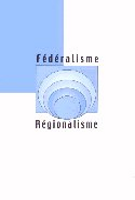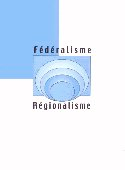- Home
- Volume 3 : 2002-2003 - Mobilité et identités dans ...
- Cross-border mobility in the Liège-Limburg area in the past and the present (19th-20th centuries). The results of the survey in a historical perspective
View(s): 3717 (24 ULiège)
Download(s): 0 (0 ULiège)
Cross-border mobility in the Liège-Limburg area in the past and the present (19th-20th centuries). The results of the survey in a historical perspective

1A major turning point in the history of the Meuse-Rhine area was the integration of Belgium, the Rhineland and the Dutch territories alongside the Meuse into the French Republic at the end of the 18th century. The French occupation put an end to the patchwork of sovereignties that had covered the area for a long time. However, after the fall of the Napoleonic Empire (1814) administrative fragmentation was re-introduced. First, the border between Limburg and the Rhineland was re-drawn in 1815, at the Congress of Vienna. Next, the Meuse was to be a frontier as the Belgians went their own way, seceding from the Netherlands in the 1830s. As a result, the region was criss-crossed again by borders of three modern nation states: Belgium, the Netherlands, and Germany.
2As a social historian, the chief purpose of my research is to investigate the social consequences of the rise of the modern nation state for the people living in border regions, such as the Dutch province of Limburg. How did the incorporation of these peripheral regions into the nation state interfere with the everyday reality in which many people lived? Did the incorporation prevent large numbers of boys and girls, living in border communities, from seeking potential husbands and wives in the neighbouring villages across the border? Did these national borders cut off the Limburgers from labour markets in which the working people had been fully integrated for a long time? What was in general the impact of boundaries on cross-border mobility and migration? This historical introduction focuses on cross-border activity in the Limburg-Liège area, leaving aside for the moment interactions alongside the German border. 1
3Allegedly, the Meuse-Rhine area, once the homeland of the Carolingians, has always shown a rather high degree of cohesion, in spite of the natural, linguistic and political frontiers dissecting the region. During many centuries human life has evolved here in quite a similar way. In spite of the rise of nation states, the inhabitants of the area retained a cross-border orientation. As it is said by a German historian: «Denn die Menschen der Euregio Maas-Rhein haben jeden Tag mit “drei Ländern
Notes
To cite this article
About: Dr Willibrord Rutten
Sociaal Historisch Centrum voor Limburg, Maastricht







